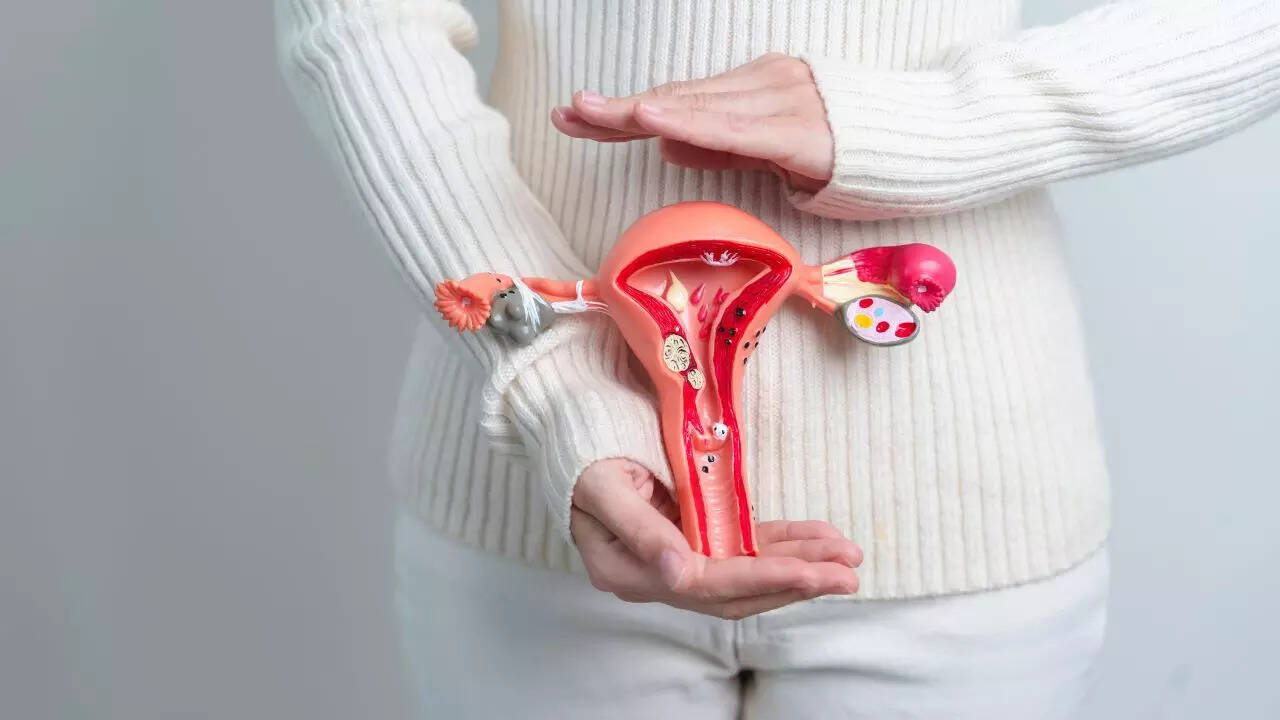Can fibroids and fibroadenomas become cancerous in future?

Fibroids and fibroadenomas are more common than people think. According to All India Institute of Medical Sciences (AIIMS), in India nearly 20 to 30% women in the reproductive age group have fibroid uterus. Similarly, It is estimated that 10% of the world’s female population suffers from fibroadenoma once in their lifetime, according to the US National Institutes of Health. After diagnosis, one of the biggest concerns among women is whether in future, fibroids and fibroadenomas could turn into cancer? What are fibroids and fibroadenomas?

Can fibroids and fibroadenomas become cancerous? Credits: Canva
FibroidsUterine fibroids, also called leiomyomas or myomas, are growths of the muscle and connective tissue of the uterus. Fibroids are very common in women of reproductive age. These can be as small as a pea and even grow large enough to change the shape of the uterus. Fibroids often show no symptoms, but when symptoms occur, they may include heavy menstrual bleeding, pelvic pain or pressure, bloating, and fertility problems.

Can fibroids and fibroadenomas become cancerous? Credits: Canva
FibroadenomasMany women describe these as a small marble in their breast. Fibroadenomas are breast lumps made up of a mix of glandular breast tissue and fibrous connective tissue. They are usually smooth, round, firm, and easily movable under the skin. Fibroadenomas are most common in women of the ages 15 and 35, but can occur at any age. Their diagnosis is usually confirmed with ultrasound, mammogram, or biopsy.
Are Fibroids and Fibroadenomas Alike? Although fibroids and fibroadenomas affect different areas of the body, they do share some similarities. Both are solid growths influenced by hormones like estrogen and are usually monitored by doctors before rushing into surgery. Are Fibroids and Fibroadenomas different from cysts?The difference in texture and structure is the biggest way to differ cysts from fibroids and fibroadenomas. While cysts are fluid-filled sacs, fibroids and fibroadenomas are solid growths.

Can fibroids and fibroadenomas become cancerous? Credits: Canva
Fibroids and fibroadenomas and future cancer risksEven though the risk of cancer has been recorded very rare in both conditions, some studies suggest that in certain cases fibroids and fibroadenomas can become cancerous. Fibroids and cancer riskAccording to the US Office on Women’s Health, although fibroids are non-cancerous growths, but less than 1 in 1000 fibroids can be cancerous. A malignant tumor of the uterine muscle called leiomyosarcoma, which is a very rare occurrence, is associated with cancer. the research suggests having fibroids does not raise the risk of any type of uterine cancer and these cancers do not develop from pre-existing fibroids.Fibroadenomas and cancer riskKey findings of a study conducted by the US National Institutes of Health concluded that having a fibroadenoma does carry a statistically measurable increase in breast cancer risk. The risk arises in cases where the Fibroadenoma becomes complex.

Can fibroids and fibroadenomas become cancerous? Credits: Canva
Even though the risk of cancer in both cases is very unusual, women are advised to get regular check-ups, to help ensure that any unusual growth is diagnosed properly.
var _mfq = window._mfq || [];
_mfq.push([“setVariable”, “toi_titan”, window.location.href]);
!(function(f, b, e, v, n, t, s) {
function loadFBEvents(isFBCampaignActive) {
if (!isFBCampaignActive) {
return;
}
(function(f, b, e, v, n, t, s) {
if (f.fbq) return;
n = f.fbq = function() {
n.callMethod ? n.callMethod(…arguments) : n.queue.push(arguments);
};
if (!f._fbq) f._fbq = n;
n.push = n;
n.loaded = !0;
n.version = ‘2.0’;
n.queue = [];
t = b.createElement(e);
t.async = !0;
t.defer = !0;
t.src = v;
s = b.getElementsByTagName(e)[0];
s.parentNode.insertBefore(t, s);
})(f, b, e, ‘https://connect.facebook.net/en_US/fbevents.js’, n, t, s);
fbq(‘init’, ‘593671331875494’);
fbq(‘track’, ‘PageView’);
};
function loadGtagEvents(isGoogleCampaignActive) {
if (!isGoogleCampaignActive) {
return;
}
var id = document.getElementById(‘toi-plus-google-campaign’);
if (id) {
return;
}
(function(f, b, e, v, n, t, s) {
t = b.createElement(e);
t.async = !0;
t.defer = !0;
t.src = v;
t.id = ‘toi-plus-google-campaign’;
s = b.getElementsByTagName(e)[0];
s.parentNode.insertBefore(t, s);
})(f, b, e, ‘https://www.googletagmanager.com/gtag/js?id=AW-877820074’, n, t, s);
};
function loadSurvicateJs(allowedSurvicateSections = []){
const section = window.location.pathname.split(‘/’)[1]
const isHomePageAllowed = window.location.pathname === ‘/’ && allowedSurvicateSections.includes(‘homepage’)
const ifAllowedOnAllPages = allowedSurvicateSections && allowedSurvicateSections.includes(‘all’);
if(allowedSurvicateSections.includes(section) || isHomePageAllowed || ifAllowedOnAllPages){
(function(w) {
function setAttributes() {
var prime_user_status = window.isPrime ? ‘paid’ : ‘free’ ;
var geoLocation = window?.geoinfo?.CountryCode ? window?.geoinfo?.CountryCode : ‘IN’ ;
w._sva.setVisitorTraits({
toi_user_subscription_status : prime_user_status,
toi_user_geolocation : geoLocation
});
}
if (w._sva && w._sva.setVisitorTraits) {
setAttributes();
} else {
w.addEventListener(“SurvicateReady”, setAttributes);
}
var s = document.createElement(‘script’);
s.src=”https://survey.survicate.com/workspaces/0be6ae9845d14a7c8ff08a7a00bd9b21/web_surveys.js”;
s.async = true;
var e = document.getElementsByTagName(‘script’)[0];
e.parentNode.insertBefore(s, e);
})(window);
}
}
window.TimesApps = window.TimesApps || {};
var TimesApps = window.TimesApps;
TimesApps.toiPlusEvents = function(config) {
var isConfigAvailable = “toiplus_site_settings” in f && “isFBCampaignActive” in f.toiplus_site_settings && “isGoogleCampaignActive” in f.toiplus_site_settings;
var isPrimeUser = window.isPrime;
var isPrimeUserLayout = window.isPrimeUserLayout;
if (isConfigAvailable && !isPrimeUser) {
loadGtagEvents(f.toiplus_site_settings.isGoogleCampaignActive);
loadFBEvents(f.toiplus_site_settings.isFBCampaignActive);
loadSurvicateJs(f.toiplus_site_settings.allowedSurvicateSections);
} else {
var JarvisUrl=”https://jarvis.indiatimes.com/v1/feeds/toi_plus/site_settings/643526e21443833f0c454615?db_env=published”;
window.getFromClient(JarvisUrl, function(config){
if (config) {
const allowedSectionSuricate = (isPrimeUserLayout) ? config?.allowedSurvicatePrimeSections : config?.allowedSurvicateSections
loadGtagEvents(config?.isGoogleCampaignActive);
loadFBEvents(config?.isFBCampaignActive);
loadSurvicateJs(allowedSectionSuricate);
}
})
}
};
})(
window,
document,
‘script’,
);
Source link




